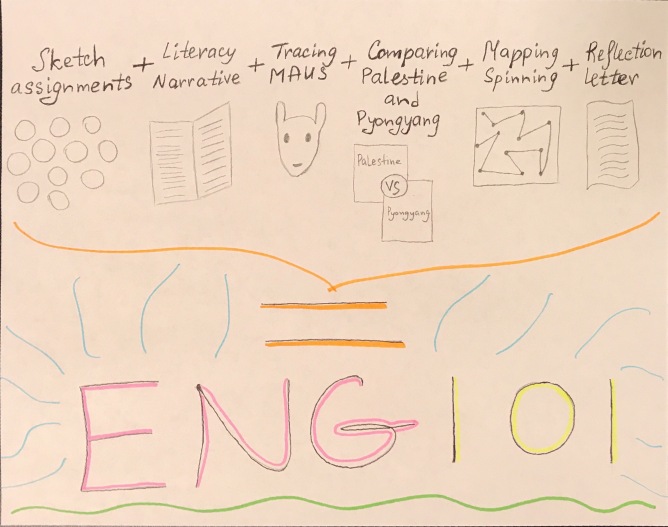This essay was a joy to write. But, I will admit, I did have to think a little about the topic. However, it was actually quite easy to decide upon when I looked at the two books from a broader point of view. When doing so, I saw that, as an informational book, Palestine is far better to Pyongyang in accomplishing that purpose. This is the overarching idea of the essay.
As for drafting, I went through only two or three. Most of it was done in one go, followed by adjustments to structure and length, and then adjustments to smaller details, like grammar and spelling and the points being made. Otherwise, I didn’t really change too much. I was pretty happy with the way it was written (for now), and I think it gives the message I wanted it to give.
In order to think of my idea, as stated, I just stepped back and looked at the books as a grand idea, not as individual vignettes. What’s the purpose of the book? What do they do good? What don’t they utilize enough? Through these questions, I was able to come to the idea of giving information. As we have discussed in class, these books are somewhat journalistic, and what does journalism do? It tells a story and displays a message. So which novel did this better?
I started to break down why I believed Palestine did this purpose better than Pyongyang. For this, I had to get rid of my subjective view and attempt to view it purely in the eyes of relative objectiveness. This meant I had to ignore the ease I felt when reading Pyongyang and think about how this ease hurt or helped Pyongyang. Likewise, I had to ignore the discomfort I felt when reading Palestine and why it hurt or helped Palestine.
In regards to the organization of my essay, I had to avoid a five paragraph essay. My three major points were ethos, logos, and pathos of the books. While I tried to fit it all into one paragraph, it would just turn into a giant paragraph that no one would want to read. So I broke each of them up, put up my antithesis, and finished with a conclusion. With an introduction at the beginning, this came out to 6 paragraphs, which wasn’t formatted in the traditional 5 paragraph essay, so I was satisfied.
Overall, I enjoyed this essay. It was a fun way to think about how vignettes help the author portray their message AND how these vignettes could differ and give better or worse in helping the author accomplish their goal.



